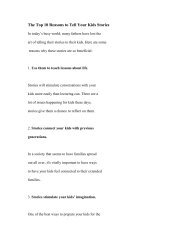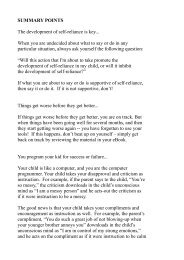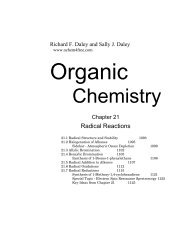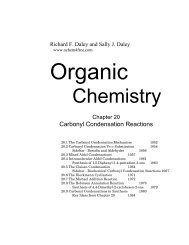Organic Chemistry
Chirality
Chirality
You also want an ePaper? Increase the reach of your titles
YUMPU automatically turns print PDFs into web optimized ePapers that Google loves.
<strong>Organic</strong> <strong>Chemistry</strong> - Ch 11 535 Daley & DaleyA plane of symmetry isan internal mirrorplane.As with all other three-dimensional objects, organic moleculesare either symmetric or asymmetric. A way to determine whether aparticular molecule is symmetric or asymmetric is to determinewhether the molecule contains a plane of symmetry. If there is aplane of symmetry, then the molecule is symmetric. If there is noplane of symmetry, then the molecule is asymmetric. A plane ofsymmetry bisects the molecule into two halves that are exact mirrorimages of each other. Ethyne (or acetylene) contains an infinitenumber of planes of symmetry. Figure 11.2 shows three of thoseplanes of symmetry, but make a molecular model to help yourselfvisualize them.Figure 11.2. Acetylene has an infinite number of planes of symmetry.Other symmetric molecules have only one or two planes ofsymmetry. Molecules with a C=C or a C=O double bond have at leastone and often two planes of symmetry. Because these functionalgroups are planar, they impart only symmetry, never asymmetry, to amolecule. However, other portions of the molecule may make amolecule with a double bond or carbonyl group asymmetric. Make amolecular model of propene (Figure 11.3). Rotate the methyl groupuntil you place one of the hydrogens in the same plane as the threehydrogens bonded to the double bonded carbons. Hold the molecule soyou are looking at this plane. Notice that the plane bisects all fourhydrogens within the plane and that the other two hydrogens areidentical mirror images of each other giving the whole molecule aplane of symmetry. This plane is the only plane of symmetry inpropene.www.ochem4free.com 5 July 2005







